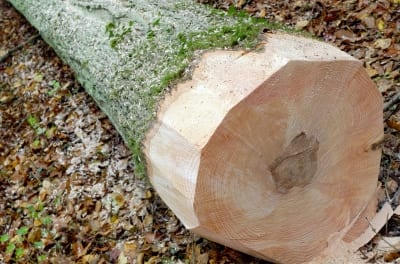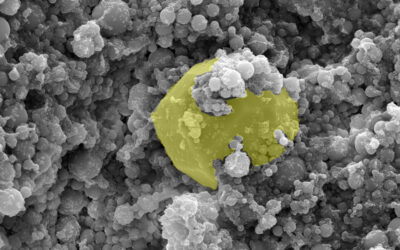A sliver of wood coated with tin could make a tiny, long-lasting, efficient and environmentally friendly battery. The components in the battery tested by scientists at the University of Maryland are a thousand times thinner than a piece of paper. Using sodium instead of lithium, as many rechargeable batteries do, makes the battery environmentally benign. However, sodium doesn’t store energy as efficiently as lithium. The purpose of this kind of battery is not the use in cell phones or other mobile devices. Its low cost and common materials would make it ideal to store huge amounts of energy at once, such as solar energy at a power plant.
 Existing batteries are often created on stiff bases, which are too brittle to withstand the swelling and shrinking that happens as electrons are stored in and used up from the battery. Liangbing Hu, Teng Li and their team found that wood fibers are supple enough to let their sodium-ion battery last more than 400 charging cycles, which puts it among the longest lasting nanobatteries.
Existing batteries are often created on stiff bases, which are too brittle to withstand the swelling and shrinking that happens as electrons are stored in and used up from the battery. Liangbing Hu, Teng Li and their team found that wood fibers are supple enough to let their sodium-ion battery last more than 400 charging cycles, which puts it among the longest lasting nanobatteries.
“The inspiration behind the idea comes from the trees”, explained Hu, an assistant professor of materials science. “Wood fibers that make up a tree once held mineral-rich water, and so are ideal for storing liquid electrolytes, making them not only the base but an active part of the battery.”
Hongli Zhu and other team members noticed that after charging and discharging the battery hundreds of times, the wood ended up wrinkled but intact. Computer models showed that the wrinkles effectively relax the stress in the battery during charging and recharging, so that the battery can survive many cycles.
“Pushing sodium ions through tin anodes often weaken the tin’s connection to its base material”, said Li, an associate professor of mechanical engineering. “But the wood fibers are soft enough to serve as a mechanical buffer, and thus can accommodate tin’s changes. This is the key to our long-lasting sodium-ion batteries.”
Source: www.umd.edu
Image: dan / FreeDigitalPhotos.net

















